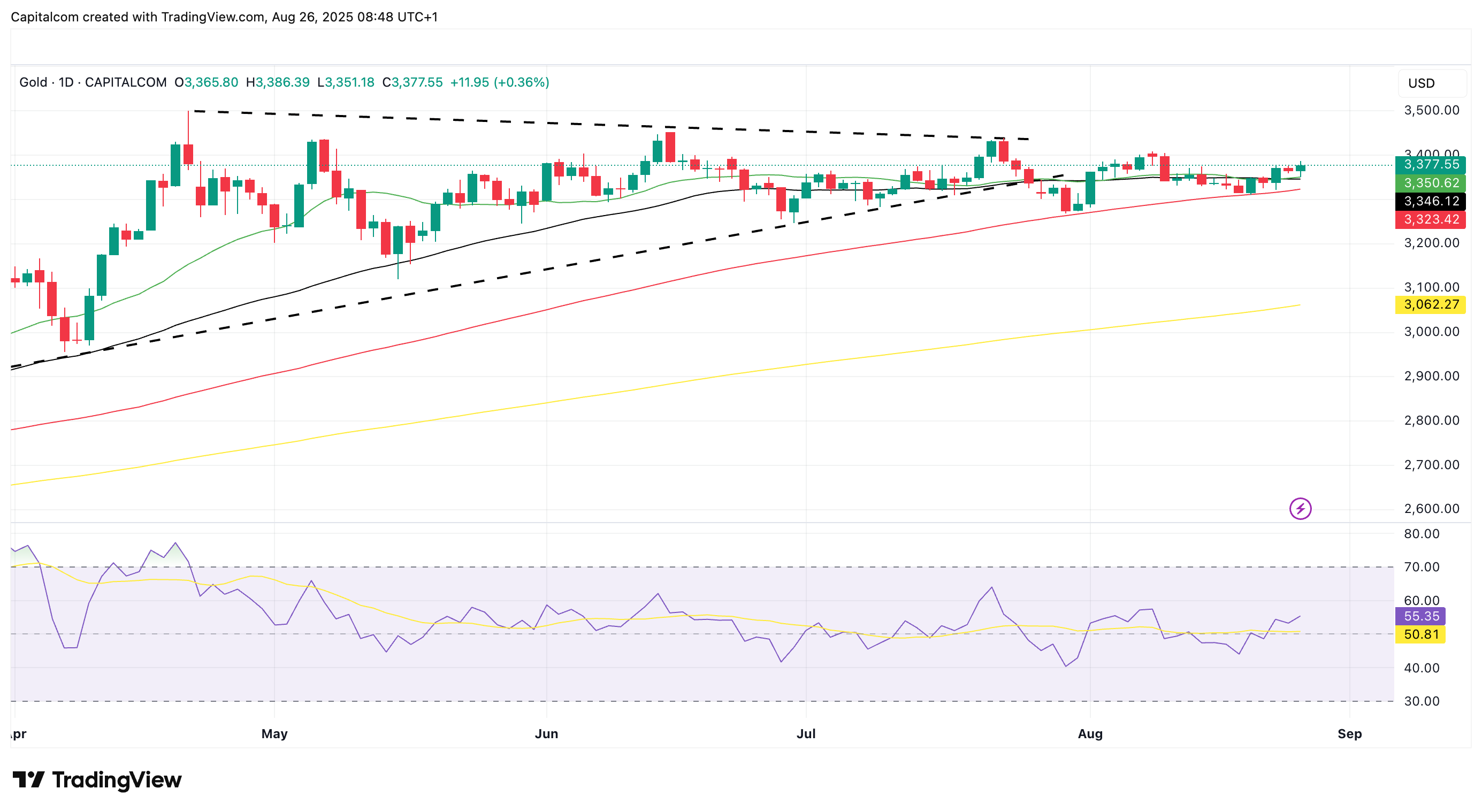Range-bound Gold looks to Fed and US data for next steps
Gold (XAU/USD) continues to trade within a tight range as investors try and determine whether they should seek protection form risk
Gold continues to capture investor attention, particularly after Friday’s price movement that underscored the metal’s ongoing consolidation phase. While long-term fundamentals remain supportive, short-term uncertainty in economic data and market direction is keeping gold in a tight range, leaving traders waiting for a decisive breakout.
From a big-picture perspective, gold remains well supported. The fundamental drivers—such as demand for diversification, central bank buying, and de-dollarization—still make it an attractive long-term asset. There is little incentive for long-term investors to be net sellers, as gold retains its role as a portfolio stabilizer.
However, in the short term, the market appears crowded. Recent moves have largely been reactionary to individual events or data releases, such as Friday’s dovish commentary from the Federal Reserve, which briefly lifted prices. Yet these gains tend to fade as the market resets, underscoring the lack of sustained momentum.
Part of the challenge lies in the mixed signals from U.S. economic data. On one hand, inflation readings and indicators such as certain business activity readings highlight resilience. On the other, the labour market has shown signs of softening in recent reports, raising questions about future growth.
This split picture leaves investors uncertain about whether to lean toward risk assets like equities, which continue to rally, or to seek safety in gold. It’s not a question of imminent recession risk, but rather whether the balance of data tilts more toward optimism or caution. This indecision has left gold range bound.
Key Levels and Potential Catalysts
Without a clear catalyst, prices are struggling to push higher despite supportive fundamentals. Gold remains capped below the $3,400 resistance level, which has proven difficult to break in recent attempts. Meanwhile, the $3,300 level and the 100-day SMA are acting as immediate levels of support.
Potential triggers for an upside breakout include:
- A September Fed rate cut: Markets currently see this as the most likely event to drive gold higher.
- Soft inflation data (PCE): A weaker-than-expected reading could weaken the dollar and boost gold.
- Labor market weakness: Another disappointing jobs report could reinforce demand for safe-haven assets.
Until such a catalyst materializes, gold is likely to remain in consolidation, with traders watching closely for signs of a renewed uptrend.
Gold (XAU/USD) daily chart

(Past performance is not a reliable indicator of future results)
For now, gold remains a constructive long-term investment, supported by fundamentals and demand for portfolio diversification. But in the near term, uncertainty over economic direction and a lack of clear catalysts are keeping prices locked in a range below $3,400. All eyes are on upcoming U.S. data and the Fed’s September meeting as potential turning points for the next leg higher.